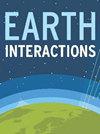未来气候下美国湖泊对蓝藻华脆弱性的地理分析
IF 1.1
4区 地球科学
Q3 GEOSCIENCES, MULTIDISCIPLINARY
引用次数: 0
摘要
蓝藻华是美国淡水日益关注的问题。尽管许多因素可以调节生物量和毒素产生之间的关系,但这种繁殖可以产生有害的条件,耗尽氧气,改变食物链,并在某些情况下可能产生强效毒素。蓝藻繁殖反过来又与营养丰富和温暖的水温有关。气候变化预计会提高水温,在许多地区,地表径流可能会将营养负荷输送到湖泊。虽然在蓝藻水华和毒素风险的短期预测方面取得了一些进展,但由于影响水华概率的多种因素复杂的相互作用,对气候变化导致哪些湖泊更容易受到此类事件影响的长期预测尚不清楚。我们通过回顾文献来解决这个问题,以确定增加湖泊对蓝藻繁殖的脆弱性的风险因素,并评估气候变化如何改变2007年国家湖泊评估中包含的美国相邻湖泊样本中的这些因素。结果提供了一个全国范围内的评估,即气候变化可能会增加蓝藻繁殖的总体风险,而不是对单个湖泊中预期的蓝藻和毒素水平进行更精细的预测。这些信息可用于指导气候变化适应规划,包括监测和管理工作,以尽量减少蓝藻流行率增加的影响。本文章由计算机程序翻译,如有差异,请以英文原文为准。
Geographic Analysis of the Vulnerability of U.S. Lakes to Cyanobacterial Blooms under Future Climate
Abstract Cyanobacteria blooms are an increasing concern in U.S. freshwaters. Such blooms can produce nuisance conditions, deplete oxygen, alter the food chain, and in some cases may produce potent toxins, although many factors may modulate the relationships between biomass and toxin production. Cyanobacterial blooms are in turn associated with nutrient enrichment and warm water temperatures. Climate change is expected to increase water temperatures and, in many areas, surface runoff that can transport nutrient loads to lakes. While some progress has been made in short-term prediction of cyanobacterial bloom and toxin risk, the long-term projections of which lakes will become more vulnerable to such events as a result of climate change is less clear due to the complex interaction of multiple factors that affect bloom probability. We address this question by reviewing the literature to identify risk factors that increase lake vulnerability to cyanobacterial blooms and evaluating how climate change may alter these factors across the sample of conterminous U.S. lakes contained in the 2007 National Lakes Assessment. Results provide a national scale assessment of where and in which types of lakes climate change will likely increase the overall risk of cyanobacterial blooms, rather than finer-scale prediction of expected cyanobacterial and toxin levels in individual lakes. This information can be used to guide climate change adaptation planning, including monitoring and management efforts to minimize the effects of increased cyanobacterial prevalence.
求助全文
通过发布文献求助,成功后即可免费获取论文全文。
去求助
来源期刊

Earth Interactions
地学-地球科学综合
CiteScore
2.70
自引率
5.00%
发文量
16
审稿时长
>12 weeks
期刊介绍:
Publishes research on the interactions among the atmosphere, hydrosphere, biosphere, cryosphere, and lithosphere, including, but not limited to, research on human impacts, such as land cover change, irrigation, dams/reservoirs, urbanization, pollution, and landslides. Earth Interactions is a joint publication of the American Meteorological Society, American Geophysical Union, and American Association of Geographers.
 求助内容:
求助内容: 应助结果提醒方式:
应助结果提醒方式:


